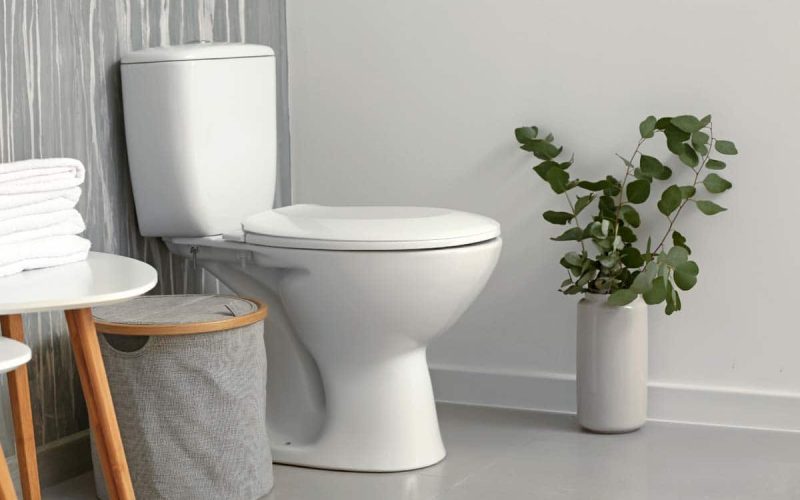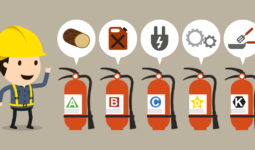You might be shocked to learn that different types of toilets are on the market. They are all unique in shape, size, structure, functionality, and sanitation.
These types of toilets also differ in price and efficiency, so being aware of them can help you choose the ideal toilet models for your home.
There are several different types of toilets to consider before making your final decision, depending on the circumstances of your home and your preferences.
The procedure has the potential to become overpowering. As a result, we’ve compiled a list of the most prevalent types of toilets.
1. Waterless Toilet
Rather than washing waste into a sewer system or septic tank, waterless toilets find ways to neutralize waste until it can be disposed of manually.
Self-contained waterless toilets are available for situations without water or plumbing. Though not widespread in permanent residences, they are frequently used on construction sites, during house remodeling projects, camping, and in similar scenarios.
In addition, water is not used in self-contained waterless systems. Instead, waste is collected in a bin beneath the toilet seat.
2. Gravity- Feed Toilet
Gravity-feed toilets are one of the most prevalent (and oldest) different types of toilets in North America. They use gravity to send waste down the toilet.
When the flush valve is pressed, water from the toilet tank falls into the bowl. The water running through the basin subsequently pushes garbage into the tramway.
Furthermore, most gravity-feed toilets use a siphoning action in the bowl. This flush’s motion is intended to help clean the bowl.
In addition, The flushing action of gravity-feed toilets is known for being quiet. Because they have a few moving parts, they require little care and are simple to repair.
3. Pressure Assisted Toilet
The main benefit of a pressure-assist toilet is the forceful flush. The device forces water into the toilet tank using pressured air, virtually eliminating double flushes.
Pressure-assisted toilets are ideal for households with many regular users. However, one drawback is that they are noisy.
4. Dual-Flush Toilet
The dual-flush toilet is a relatively new style that is gaining popularity quickly due to its water-saving benefits.
Dual-flush toilets combine gravity-feed and pressure-assisted toilets. When you empty the bowl, you can choose between a half-flush and a full flush.
In addition, with a gravity-feed system, a half flush clears the toilet. For liquid waste, use this flush, and the complete flush removes the toilet with a pressure-assisted method for solid waste.
However, dual-flush toilets are rapidly catching up to gravity-feed and pressure-assisted toilets in terms of sales.
5. Double-Cyclone Toilet
Double-cyclone toilets are a relatively new technology that has yet to gain traction (though it will likely do so soon).
These are among the different toilets that consume very little water per flush while still providing a tremendous amount of flushing power.
Instead of using perforations in the bowl’s rim to deliver water for the flush (like with all other types of toilets), a double-cyclone toilet uses two nozzles along the perimeter to give the flush.
Overall, the nozzles deliver a more efficient flush. While each flush saves a small amount of water, it builds up to make a significant difference in your monthly water bill.
6. Composting Toilet
Composting is a biological process that treats human waste, which is how this sort of toilet acquired its name.
Most of these toilets employ bulking materials like sawdust, wood chips, coconut coir, or peat moss after each use.
When human feces is adequately composted, the result is safe and easy to handle, with no unpleasant odor and no liquids behind.
The compost is adequate for plants, decreasing the demand for commercial fertilizers while conserving water quality.
Composting toilets may be a stylish addition to any modern bathroom when adequately installed and maintained.
7. One-piece Toilet
This is one of the different types of toilets in which the toilet tank is joined to the bowl, resulting in a single ceramic unit.
The apparent benefits of these toilets are that the water tank is often smaller, and there is no fissure in the center, making them easy to clean.
Purchasing a one-piece toilet usually includes a toilet seat, so this isn’t an issue. However, the only disadvantage is likely the cost, but it is well worth it.
8. Two-piece Toilet
This is arguably one of the most widely used toilets on the continent. In contrast to the one-piece toilet, the water tank and bowl are separated, allowing the tank to hold more water.
Although most people presently prefer one-piece toilets, the two-piece toilet has advantages.
The most important factor is durability, and the TOTO Drake II is one of the toilets that can survive for decades.
Other toilets are similarly long-lasting, but the two-piece toilet is simple to repair and replace parts on. You only need to be concerned with the brand you choose.
9. Wall- Mounted Toilet
Toilets that hang from the wall aren’t quite typical in-home bathrooms. In a commercial atmosphere, you’re considerably more likely to observe them.
In these toilets, the toilet bowl and flush plate are securely fastened to the wall, and the toilet tank is hidden behind the wall.
The most significant advantage of a wall-hanging toilet is its compact size. This type of toilet is the most popular solution for small bathrooms with limited space.
Toilets that hang from the wall save up to one foot of floor space. They’re also easy to clean because of their sleek design.
10. Touchless Touch Toilet
Public restrooms are the most typical location for touchless flush toilets. When the toilet senses that you are using it, it flushes automatically instead of a button, lever, or another flush valve.
Furthermore, most home touchless flush toilets use a motion sensor on the toilet tank. To flush, raise your hand above the sensor.
The most important advantage of a touchless flush toilet is its cleanliness, and it reduces the spread of germs because you never have to contact the toilet while using it.
Batteries power the majority of touchless flush toilets. Most single-flush and double-flush toilets can be converted to touchless toilets.
11. Flushometer
A toilet with a flushometer flushing mechanism is known as a flushometer toilet.
These are typically found in commercial building bathrooms rather than in-home restrooms, and it’s the tankless toilet’s flushing mechanism.
The benefit is that it generates a higher flush pressure, essential in commercial situations.
A stronger flush might be preferable in domestic bathrooms, but these toilets demand a more excellent water supply.
12. Upflush Toilet
Upflush or macerating toilets are used in areas where a water closet is needed but without direct access to the plumbing system.
While regular toilets transport waste into a compost pile or the sewer system using gravity or air pressure, upflush toilets send trash to a holding tank chewed by blades.
Furthermore, once the garbage has been reduced to a manageable size, a pump transports it through a line to your home’s sewage connection.
Because this pump is the macerating toilet’s most likely point of failure, it should not be utilized as a primary toilet in a family household. Instead, it helps convert a basement or shed into a bathroom.
13. Urinal
Yes, a urinal can be installed in your home. They can quickly pay for themselves if they have a lot of space in their bathroom, wish to save water, and can pee standing up.
Urinals can have a built-in flush mechanism or flush waterless, utilizing scented disinfectants to save even more water.
14. Portable Toilet
These are portable toilets that may be moved from one location to another. They’re ideal for outdoor activities like hiking, camping, festivals, etc.
You can easily transport your compact portable toilet and contribute to keeping the environment clean and safe.
15. High-Level Toilet
High-level toilets can provide a lovely traditional touch to your bathroom. They have a high-up on-the-wall cistern that must be strengthened to avoid problems.
High-level toilets have a long chrome flush pipe with a long pull chain flush for an elegant design.
16. Small Compact Toilet
These toilets are one of the different toilets used in small bathrooms. Because of their modest, compact shapes, they’re ideal if you need to preserve space or can’t place a toilet in there.
Wall-mounted toilets, toilets without a tank, and toilets that are small are common examples. Furthermore, these toilets are ideal for tiny homes, RVs, motorhomes, and boats.
17. Corner Toilet
These toilets are commonly referred to as triangle toilets, which is understandable given that the water tank is shaped like a triangle and fits neatly into the corner.
The most apparent benefit of corner toilets is that they can fit into even the tiniest spaces.
However, some people find these toilet types strange, and they are rarely purchased unless there is a requirement for ideal space or architectural constraints.
The most crucial point is that toilet types with the proper setting for a corner set without impeding anyone’s route are difficult to come by. However, think twice before making a move on this one.
18. Elongated Toilet
This form, often known as an oval shape, is said to be the ideal fit for your butt. Adults prefer these types of toilets because they are more comfortable.
As a result, it is more frequently used by customers and is more popular than its spherical equivalent, the round toilet.
Although this isn’t always the case, some believe elongated toilets require more space than other bowls. Elongated toilets generally have a more extensive pipeline than different toilet shapes.
The big bowl and water surface are ideal for capturing any spills. However, a minor disadvantage is that the excrement will likely cause a mess on the extended part’s small hill.








